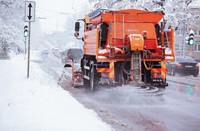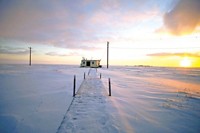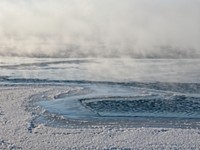Advertisement
Grab your lab coat. Let's get started
Welcome!
Welcome!
Create an account below to get 6 C&EN articles per month, receive newsletters and more - all free.
It seems this is your first time logging in online. Please enter the following information to continue.
As an ACS member you automatically get access to this site. All we need is few more details to create your reading experience.
Not you? Sign in with a different account.
Not you? Sign in with a different account.
ERROR 1
ERROR 1
ERROR 2
ERROR 2
ERROR 2
ERROR 2
ERROR 2
Password and Confirm password must match.
If you have an ACS member number, please enter it here so we can link this account to your membership. (optional)
ERROR 2
ACS values your privacy. By submitting your information, you are gaining access to C&EN and subscribing to our weekly newsletter. We use the information you provide to make your reading experience better, and we will never sell your data to third party members.
Physical Chemistry
Origin Of Arctic Bromine Identified
Atmospheric Chemistry: Surface snow reactions create pollutant-scrubbing compound
by Jyllian Kemsley
April 19, 2013
| A version of this story appeared in
Volume 91, Issue 16

As sea ice covers less and less of the Arctic Ocean—coverage in August 2012 was the lowest ever recorded—achieving a better understanding of the chemistry of the Arctic environment is becoming increasingly important. Scientists say the clock is ticking in their quest to comprehend the interactions of seawater, snow, and air in the region.
Researchers have known for some time that reactions in ice and snow affect the Arctic atmosphere. Fieldwork in Alaska led by Purdue University scientists provides new details on a critical portion of Arctic chemistry. The scientists found that bromine (Br2), a precursor of bromine radicals (Br•) that cleanse pollutants from the atmosphere, forms in surface snow exposed to sunlight (Nat. Geosci., DOI: 10.1038/ngeo1779).
In the Arctic, bromide (Br–) from seawater somehow gets turned into Br2, which winds up in the air. In the atmosphere, sunlight then converts Br2 to Br•, which reacts with pollutants such as sulfur dioxide and mercury and helps remove them.
Scientists previously did not understand exactly where or how Br– forms Br2 and Br• because they have had trouble connecting atmospheric observations with laboratory experiments, says University of Toronto chemistry professor Jonathan Abbatt in a commentary accompanying the report.

To pin down the source of these bromine species, a group led by Purdue postdoctoral researcher Kerri A. Pratt and chemistry professor Paul B. Shepson looked for evidence of Br2 formation in Barrow, Alaska, as part of a multi-institutional project called the Bromine, Ozone & Mercury Experiment.
Pratt and colleagues collected samples of sea ice, brine icicles formed beneath uplifted sea ice, and different layers of snow from on top of both ice and land. The researchers then used mass spectrometry to look for Br2 in the samples. They found that Br2 was produced in surface snow, that sunlight was required, and that ozone (O3) increased Br2 production.
Combining their new results with previous studies, Pratt and her colleagues suggest a mechanism for Br2 production that starts with photolysis of other compounds in snow to produce hydroxyl radicals (•OH). These radicals then react with seawater-derived Br- in the snow to form Br2. The Br2 can either get swept into the atmosphere by wind or react further in snow in a cascade of events that incorporate more Br– into Br2.
Pratt’s team notes that the ice sampled in the study had formed over the previous winter. The team did not study older sea ice. Further work will be necessary to understand to what degree diminishing sea ice will affect atmospheric bromine chemistry, Pratt says.





Join the conversation
Contact the reporter
Submit a Letter to the Editor for publication
Engage with us on Twitter